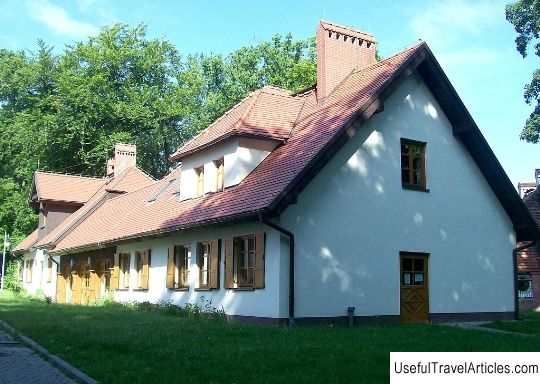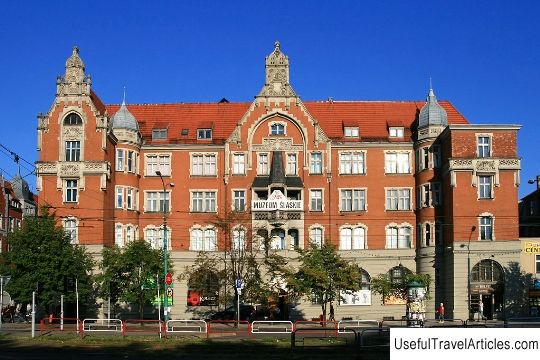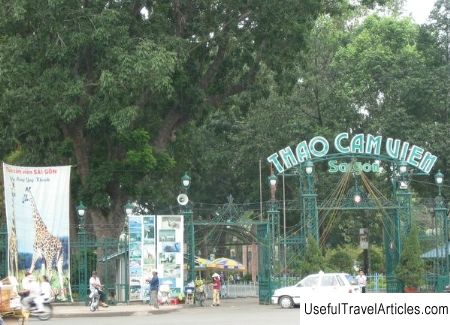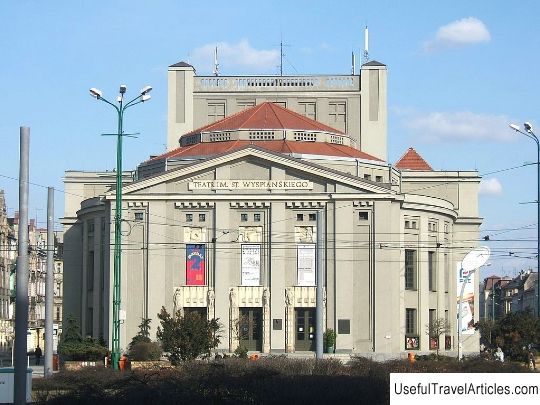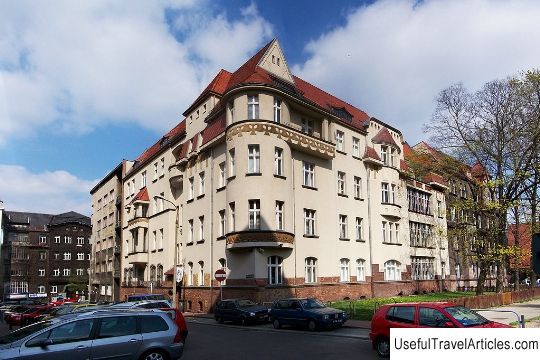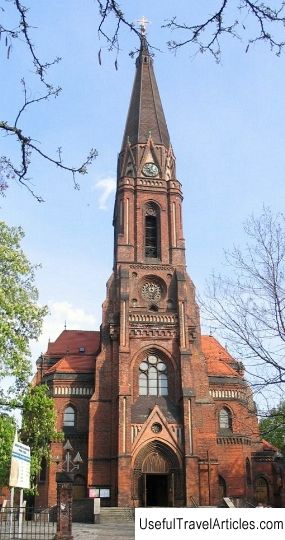Izba Slaska Museum description and photos - Poland: Katowice
Izba Slaska Museum description and photos - Poland: Katowice. Detailed information about the attraction. Description, photographs and a map showing the nearest significant objects. The title in English is Izba Slaska. Photo and descriptionThe Silesian Hut Museum is a museum located in Katowice dedicated to the culture and art of Upper Silesia and the works of the Polish painter Ewald Hawlik (1919-1993). The museum building was built at the beginning of the twentieth century by cousins, architects and graduates of the Royal College of Technology Emil and Georg Silmann. Initially, the building housed stables, quarters for coachmen and a carriage shed. In 1986, the Staszic coal mine donated the building. After the renovation was carried out in it, they tried to give the house a traditional Silesian character. Initially, only paintings by the artist Ewald Hawlik appeared in the museum. The works occupied three rooms, and the artist's furniture also appeared there: a sofa, an aquarium, a birdcage, a wardrobe and a chest of drawers. The exhibition of paintings gradually began to be supplemented with traditional Silesian furniture, antique dishes and household items. All this was collected, mainly at the expense of miners and residents of nearby villages. Soon, the artist's house was transformed into a branch of the Municipal House of Culture. Currently, the museum contains furniture, dishes, paintings, carpets, women's jewelry, clothing items - everything that could be seen in the Silesian huts of the end nineteenth to early twentieth centuries. In addition to the permanent exhibition, the museum holds thematic seminars for schoolchildren and adults. During such meetings, you can learn more about the customs and rituals of Upper Silesia, learn how to cook traditional dishes (sauerkraut, bake bread, cook cabbage soup and make bacon). antique dishes and household items. All this was collected, mainly at the expense of miners and residents of nearby villages. Soon, the artist's house was transformed into a branch of the Municipal House of Culture.Currently, the museum contains furniture, dishes, paintings, carpets, women's jewelry, clothing items - everything that could be seen in the Silesian huts of the end nineteenth to early twentieth centuries. In addition to the permanent exhibition, the museum holds thematic seminars for schoolchildren and adults. During such meetings, you can learn more about the customs and rituals of Upper Silesia, learn how to cook traditional dishes (sauerkraut, bake bread, cook cabbage soup and make bacon). antique dishes and household items. All this was collected, mainly at the expense of miners and residents of nearby villages. Soon, the artist's house was transformed into a branch of the Municipal House of Culture.Currently, the museum contains furniture, dishes, paintings, carpets, women's jewelry, clothing items - everything that could be seen in the Silesian huts of the end nineteenth to early twentieth centuries. In addition to the permanent exhibition, the museum holds thematic seminars for schoolchildren and adults. During these meetings, you can learn more about the customs and rituals of Upper Silesia, learn how to cook traditional dishes (sauerkraut, bake bread, cook cabbage soup and make bacon). the artist's house was transformed into a branch of the Municipal House of Culture.Currently, the museum contains furniture, dishes, paintings, carpets, women's jewelry, elements of clothing - everything that could be seen in the Silesian huts of the late nineteenth early twentieth century. In addition to the permanent exhibition, the museum holds thematic seminars for schoolchildren and adults. During such meetings, you can learn more about the customs and rituals of Upper Silesia, learn how to cook traditional dishes (sauerkraut, bake bread, cook cabbage soup and make bacon). the artist's house was transformed into a branch of the Municipal House of Culture.Currently, the museum contains furniture, dishes, paintings, carpets, women's jewelry, clothing items - everything that could be seen in the Silesian huts of the late nineteenth early twentieth century. In addition to the permanent exhibition, the museum holds thematic seminars for schoolchildren and adults. During such meetings, you can learn more about the customs and rituals of Upper Silesia, learn how to cook traditional dishes (sauerkraut, bake bread, cook cabbage soup and make bacon). In addition to the permanent exhibition, the museum holds thematic seminars for schoolchildren and adults. During such meetings, you can learn more about the customs and rituals of Upper Silesia, learn how to cook traditional dishes (sauerkraut, bake bread, cook cabbage soup and make bacon). In addition to the permanent exhibition, the museum holds thematic seminars for schoolchildren and adults. During such meetings, you can learn more about the customs and rituals of Upper Silesia, learn how to cook traditional dishes (sauerkraut, bake bread, cook cabbage soup and make bacon).     We also recommend reading Yverdon Castle - City Museum (Chateau d'Yverdon) description and photos - Switzerland: Yverdon-les-Bains Topic: Izba Slaska Museum description and photos - Poland: Katowice. |
